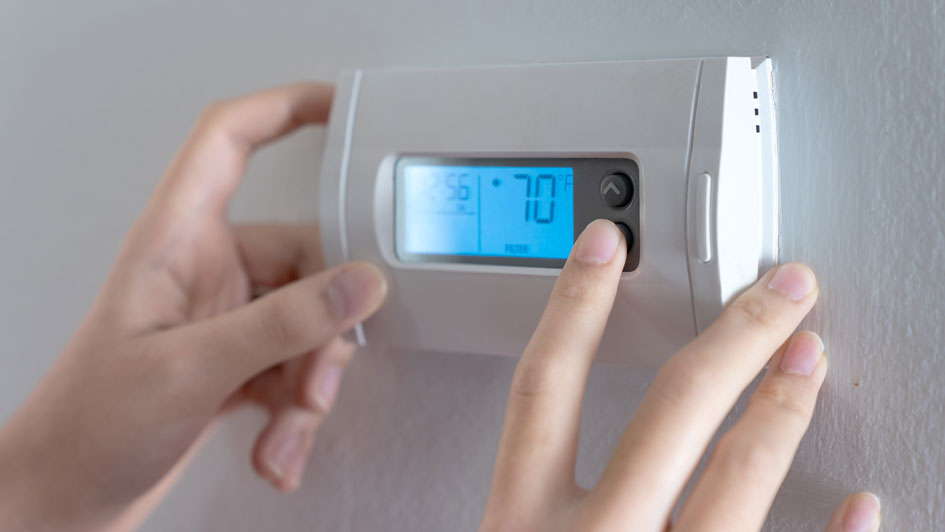
Everyone’s always looking to save money on their utility bills, but it turns out there’s a way to lower energy use, even when you're not even home.
The key is your thermostat. By learning more about its special features and settings, you can tailor the temperature to your needs. That means you can have different temperature settings for when you’re home, away or even when you’re sleeping.
By trying a few of these schedules, you can enjoy comfy temperatures while keeping more money in your pocket. Check out our guide on how your thermostat doesn't have to use up all your summer spending money:
While at Home
Whenever you're at home, you want a nice range of pleasant temperatures. That’s why it’s best to set your thermostat lower in the summer while inside to appreciate the cool air.
But the ideal temperature for when you're in your home during the summer is usually between 78 and 80 degrees Fahrenheit. By adjusting things a few degrees, you'll keep cool while still lowering your monthly energy bill.
While Out of the House
If you're setting the temperature for when you are out of the house in summer, it’s advantageous to set the thermostat higher for while they're gone.
For some homes, you can set the thermostat to higher temperatures like 88 degrees while no one is home before you adjust it back to the sweet spot of 78-80 degrees when you or a family member return. This way, your air conditioning unit won’t be working overtime to cool an empty house.
While Sleeping
To enjoy a good night's sleep during the summer, you want your thermostat set at a comfortable temperature. You should try and keep things between 68-72 degrees Fahrenheit. There's less risk of getting too hot or too cold at some point overnight.
Other Strategies for Lowering Energy Use:
- Put in a smart thermostat: Using a smart thermostat in the summer is an excellent way to reduce energy costs since it can plan your temperature adjustments according to your lifestyle and idea of what comfortable is. A smart thermostat manages the temperature if you are home or sleeping, before allowing it to get a little warmer when no one is home. With reliable brands like the Lennox iComfort, you can adjust the temperature remotely through your smartphone, tablet or laptop. Planning smart thermostat installation in your York home can be the simplest strategy for maintaining comfortable, yet energy-efficient temperatures no matter where you are.
- Upgrade your HVAC system: A high-efficiency HVAC system saves money right from the start. With greater energy efficiency, you can also count on lower utility bills since more efficient equipment requires less energy to achieve comfortable temperatures. Air conditioning installation in York is a great way to beat the heat in the summer.
- Stay on top of routine AC maintenance: Hiring a skilled professional to perform regular air conditioning maintenance in York can have a big impact on your monthly energy use. If you stay on top of cleaning key components like the coils, checking for damage and clearing air vents of dust and debris, this can help your HVAC system run more efficiently. Higher energy efficiency will also reduce strain on key parts and lowers operational costs, leading to lower energy usage, which translates into lower energy bills.
- Replace your air filter regularly: A regular schedule for cleaning or replacing the HVAC system's air filter saves money by improving airflow. When filters are old and less effective, an AC unit has to work harder, and the strain can reduce the system’s life span and lead to breakdowns.
- Confirm your attic is sufficiently insulated: Insulation is a crucial component for any energy-efficient home, securing the hot air outside and the cool air inside through summer. The North American Insulation Manufacturers Association (NAIMA) suggests that homeowners living in southern climates should install at least 13-14 inches of insulation, while those in northern U.S. states should have 16-18 inches.
- Inspect your air ducts: Leaky ductwork can raise your energy bills much more than 20 percent, plus it can potentially allow harmful emissions from your water heater, clothes dryer and other appliances to get into the atmosphere of your home. Checking your ductwork for leaks and sealing them can address both concerns.
- Seal all other leaky spots in your home: Sealing up other leaks in your home with caulk, foam sealant or weather-stripping keeps temperatures a little cooler on hot summer days. It’s also important to check for any gaps around windows, doors and even outdoor fixtures. Making time to seal leaks now can help you save a lot in the long term.
